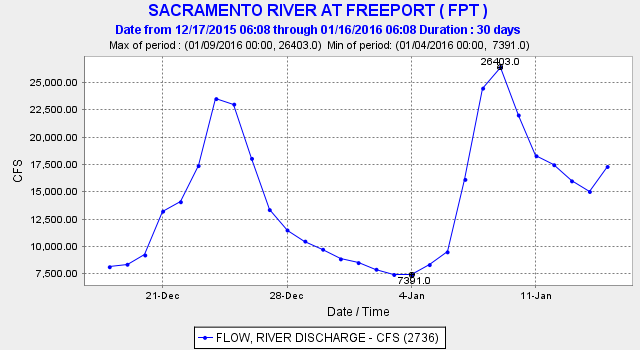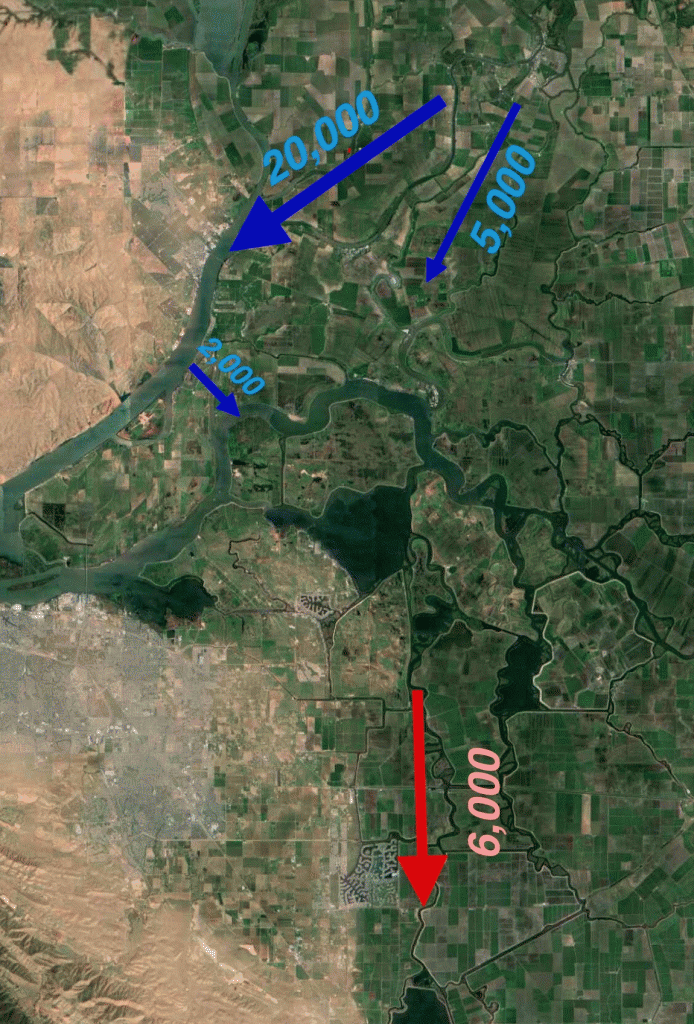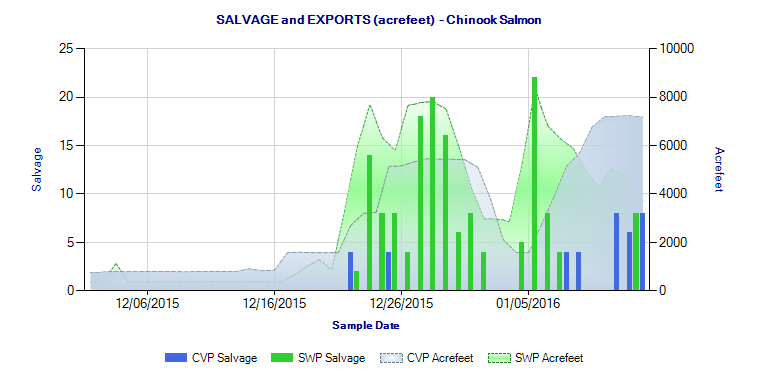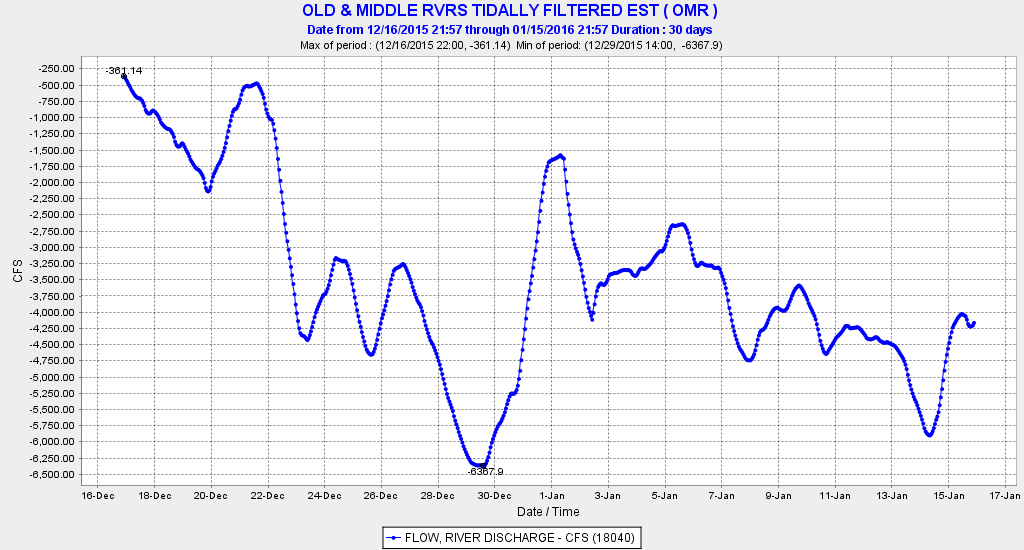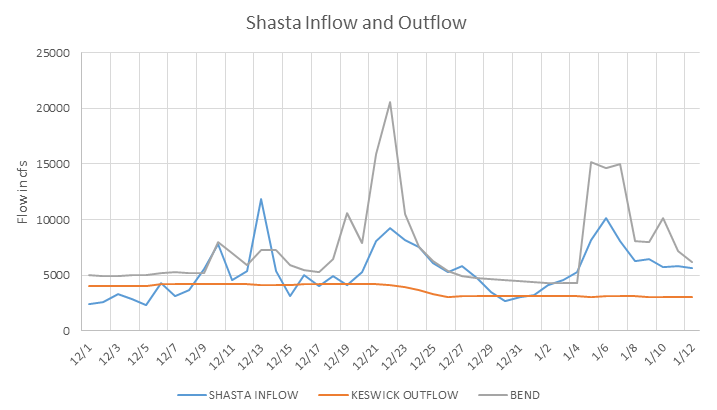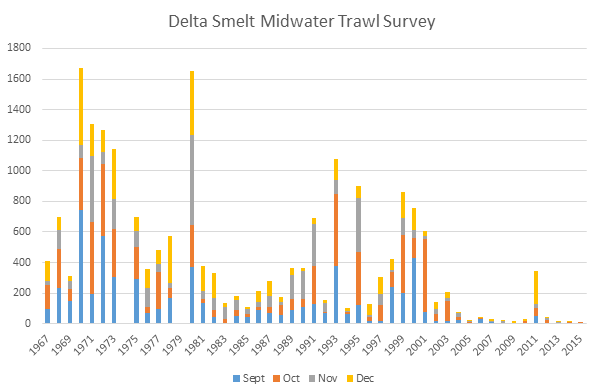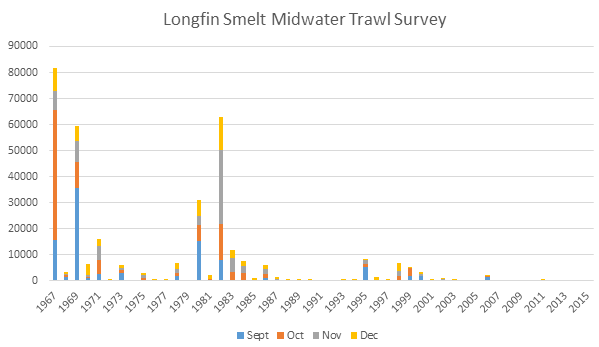In most years a concentration of spawning and rearing Delta Smelt is found in the Cache Slough Complex of the north Delta. The Cache Slough Complex consists of Cache Slough, Liberty Island and adjacent sloughs, and the Sacramento Deepwater Ship Channel. Upstream-migrating adult smelt ride the flood tide in winter seeking freshwater spawning habitat with warmer, more productive, stable conditions to spawn and rear their young. The Cache Slough Complex is such a place. Recent flood tide conditions at the junction of the Cache Slough help show how the smelt migration is accomplished (Figures 1 and 2). Flood tides carry the smelt upstream in the main Sacramento channel past Rio Vista to the mouth of Cache Slough, where the tide and fish turn left up the slough on toward the lower Yolo Bypass. The Bypass is a large area with a large tidal exchange and minimal freshwater inflow and outflow most years. In contrast, Steamboat and Miners sloughs and the lower Sacramento River channel above Cache Slough have strong freshwater flows and limited areas of tidal exchange, resulting in no upstream-directed flood tide flow. Their downstream-directed flood tide flows enter the Cache Slough flood tide, turning right and going upstream. These circumstances likely enhance smelt migration toward the Cache Complex and hinder migration up the Sacramento and its two branches that carry the main river inflow to the Delta.
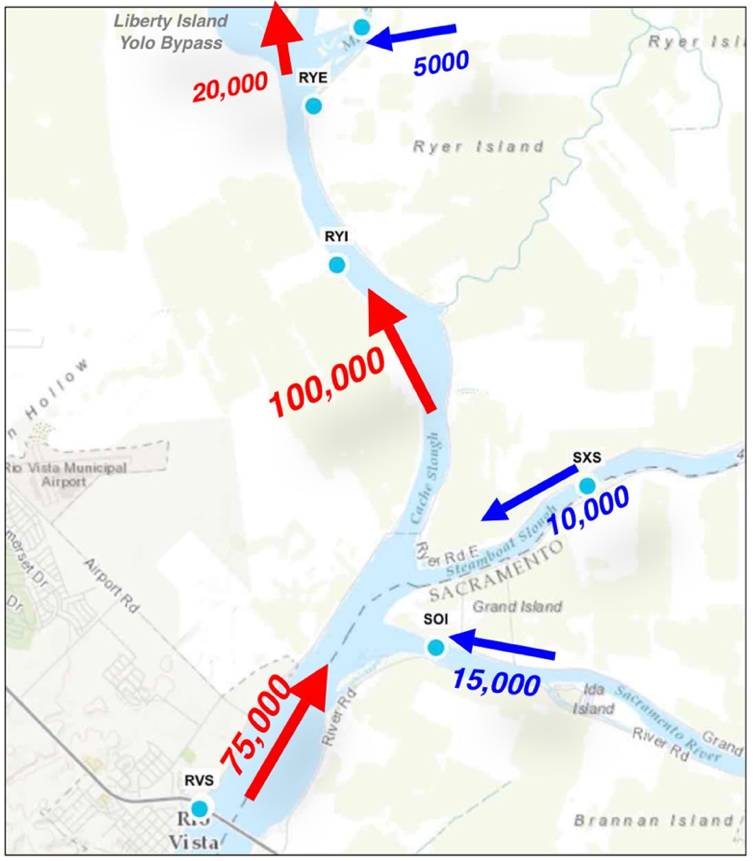
Figure 1. Floodtide flows (cfs) on 1/24/16 in the lower Sacramento River near Rio Vista upstream to Cache Slough Complex. Red arrows are upstream flow rates. Blue arrows are downstream flows during the flood tide in Miner (top) and Steamboat (middle) sloughs, and Sacramento River (bottom). Light blue dots are CDEC gaging stations.
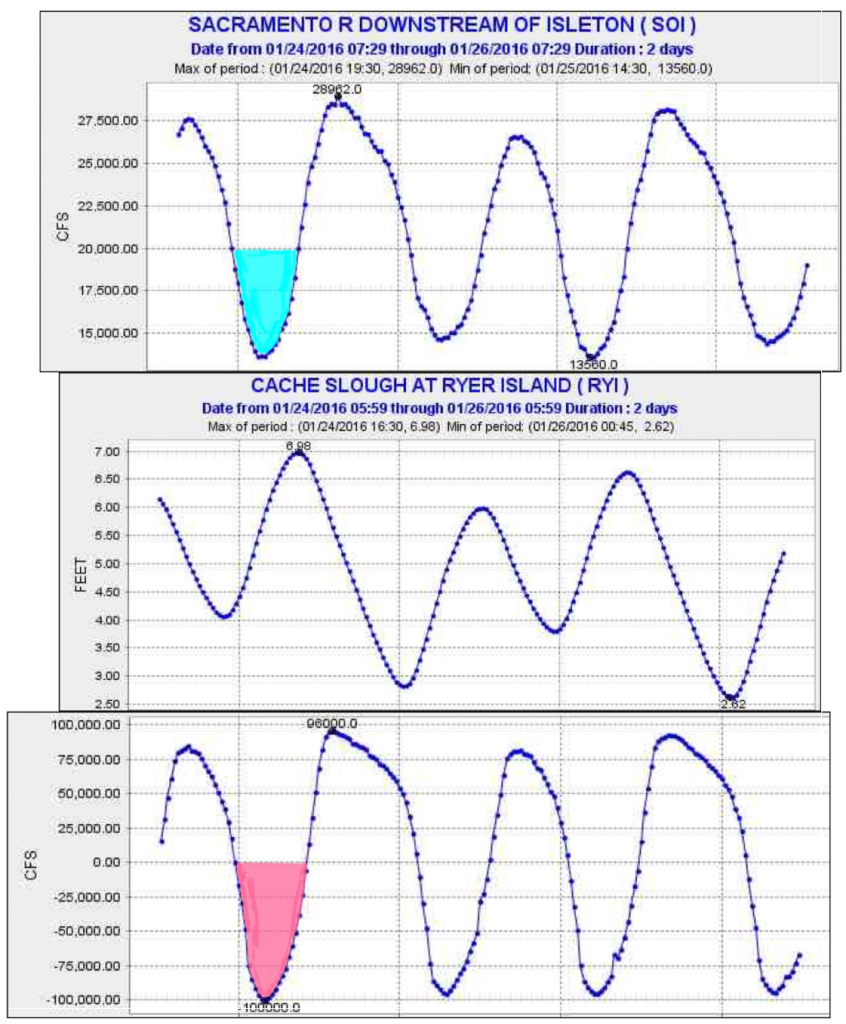
Figure 2. upstream of Cache Slough 1/24-1/26 2016. Blue denotes net positive downstream flows in Sacramento River continue on flood tides. Red denotes upstream directed currents in Cache Slough during flood tides. Gage locations for SOI and RYI are in Figure 1.
The Cache Slough Complex including the lower Yolo Bypass and Deep Water Ship Channel is a great place for smelt, salmon, and other native fishes in winter and spring especially in wet years like this. With freshwater inputs modest from Putah Creek, Cache Creek, and the Colusa Basin Drain, and a vast acreage of marshes, sloughs, and shallow bays with long water residence times and tidal sloshing, the whole place becomes “green soup” perfect for growing young smelt. With lots of municipal, urban, and ag runoff and drains, the area is nutrient rich, warmer, and more productive, growing plentiful plankton for smelt food, unlike the river and Delta in winter-spring.
In very wet years, all of that wonderful green soup is blown into the Delta and eastern Bay by floods pouring through the Bypass and out the mouth of Cache Slough. In wet and normal years much of the productivity and smelt reaches or extends into the Delta (e.g., 2011, the last good year for smelt). The Delta and Bay significantly benefit from these inputs.
But in the dry and critical years, especially multiyear droughts, things are not so good for the Cache Slough Complex. In winter, the tides still carry the adult smelt and juvenile salmon up into the Yolo Bypass, but with virtually no freshwater inflows. However, with continuing ag and municipal (e.g., North Bay Aqueduct) demands and most of the discharges, the place becomes a hot stew by late spring. Negative daily average net flows from all the local demands on water virtually trap young smelt in the Complex, as they are unable to ride natural net downstream flows to their spring-summer nursery in the west Delta and eastern Suisun Bay. With summer water temperature approaching 75-80°F, most of the smelt die from the heat or predation by abundant warm-water predatory fish.
The large acreages of planned habitat restoration in the Complex will increase its tidal influx, but do little about these dry year problems (or make them worse). The solutions have been known for a long time:
- Get the North Bay Aqueduct intake out of the Complex with a pipe to the Sacramento River.
- Divert more Sacramento River water into the upper Yolo Bypass at the Fremont Weir to add to minimum flows in the 40 miles of the Bypass.
- Fix the stuck-closed gate at the head of the Deepwater Ship Channel on the Sacramento River to allow more freshwater inflow into the Complex.
- Stop the use of tide gates for irrigating lands within and adjacent to the Complex.
- Improve the water quality of all discharges into the Bypass.
The key to fixing all the Bay-Delta ecosystem’s problems including saving salmon and smelt from extinction lies in managing hydrology and water use in dry years and multiyear droughts. The solutions, especially the five mentioned above, are really not that hard to implement.



